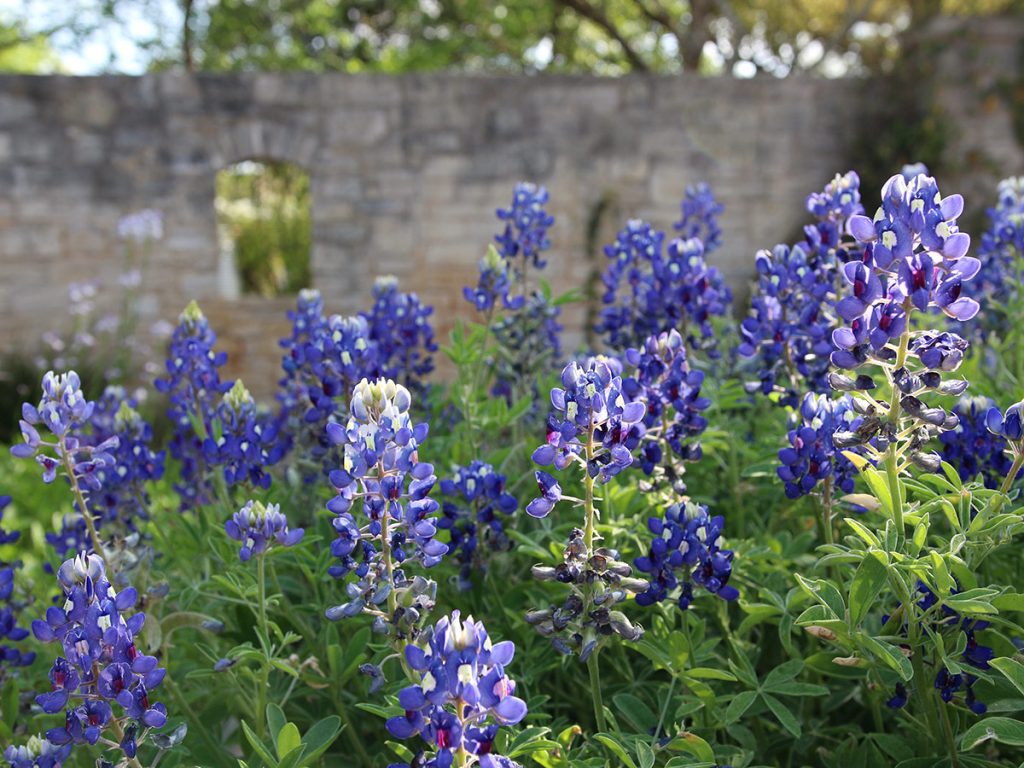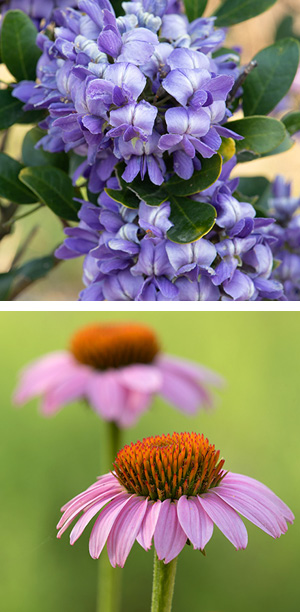PRESSROOM
Wildflower Update: Spring 2022

Bluebonnet patch PHOTO Wildflower Center
Spring has sprouted in Central Texas, albeit a bit later than usual. Due to cooler temperatures earlier in the year, peak bluebonnet season is happening now, rather than in late March. But spring is progressing quickly, which means those hoping to take pictures among our state’s most iconic blooms should act fast.
“If it remains hot and dry, the bloom period will be shorter,” explained Andrea DeLong-Amaya, director of horticulture at the Wildflower Center, during a recent media event in the Central Gardens.
Don’t worry, though — even if there’s not much rain and bluebonnets become more sparse in a couple weeks’ time, there will still be plenty of reasons to get outside and celebrate the season. For starters, observing bluebonnets at the end of their bloom period can be quite entertaining. Their seeds are dehiscent, which means that when they are fully ripe, they get noisy and shoot out like pellets.
“You’ll hear the popping noise and think, ‘Who’s over there?,’” said DeLong-Amaya. “And then you’ll realize it’s the plants talking.”

FROM TOP Texas mountain laurel and Purple coneflower PHOTOS Wildflower Center
Bluebonnets are also a sign of spring’s beginning rather than its end. They’re often some of the earliest bloomers at the Center, along with golden groundsel (Packera obovata) and flowering trees like mountain laurel (Sophora secundiflora) and Mexican plum (Prunus mexicana).
By mid-spring our gardens are usually full of Engelmann’s daisy (Engelmannia peristenia), and pink evening primrose (Oenothera speciosa); while late spring typically welcomes horsemint (Monarda citriodora), mealy blue sage (Salvia farinacea), coneflower (Echinacea spp), and blanketflowers (Gaillardia spp.), our 2022 Wildflower of the Year.
The intensity of wildflower season is heavily influenced by fall and winter rains. Though the state’s native plants are adapted to withstand a certain amount of drought, lack of rain impacts their energy to develop showy blooms. According to weather maps shared by KXAN meteorologist and Wildflower Center advisory council member David Yeomans, most of the state is experiencing severe to extreme drought, and that pattern is expected to continue. For the best wildflower displays, DeLong-Amaya recommends visiting the Wildflower Center or driving east of Austin.
“Check out the Brenham area, between Austin and Houston,” she says. “There are some really nice patches of wildflowers blooming there.”
If that’s a bit out of the way for you, visit our Wildflower Central webpage, where you can search for regional wildflower drives and see real time pictures of blooms people are spotting across the state.
Photos for media are available upon request. Inquire with Catenya McHenry.
